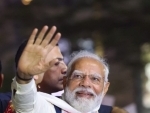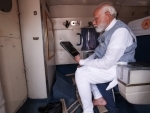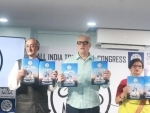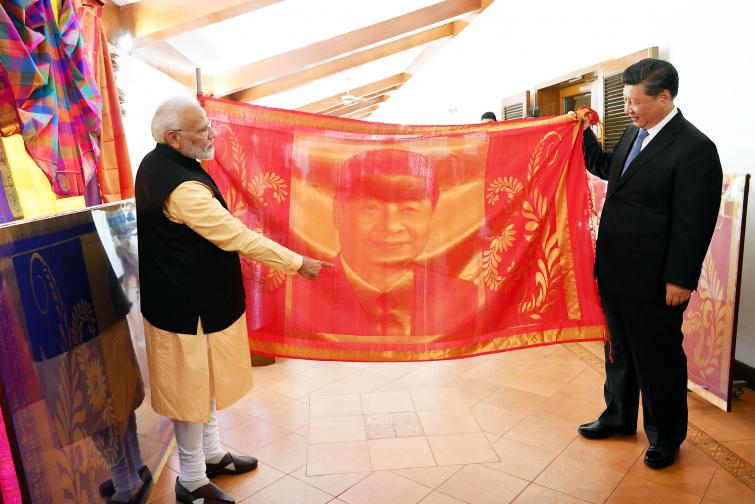
Strategists come together to brainstorm on rethinking India’s ‘One China Policy’
New Delhi: Amidst the high tension across the Line of Actual Control in Ladakh region, prominent Indian strategic experts in a recent webinar have agreed that there is a need for India to build up its own capabilities to counter China on all fronts, and not only along the border.
Speaking at the webinar on Friday, Jayadeva Ranade, a former Additional Secretary, Cabinet Secretariat, Government of India, and President, Centre for China Analysis and Strategy, predicted that the tensions between the US and China will certainly either put us in a sweet or in a delicate position in the time to come.
He advocated that the Tibetan spiritual leader Dalai Lama should be given more prominence on major platforms.
“Tibet touches us because of Buddhism,” he said.
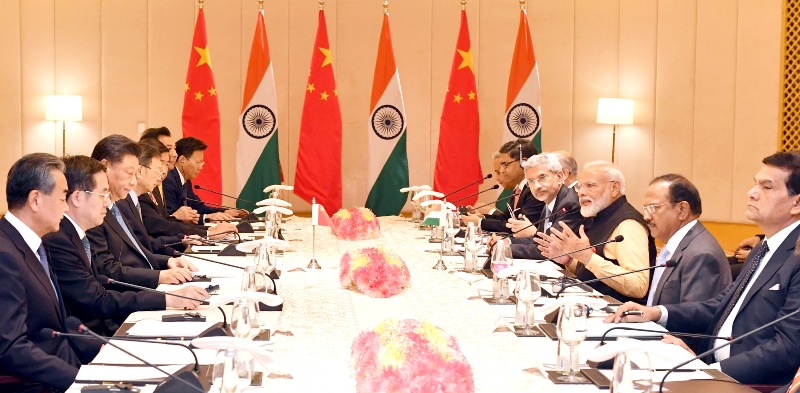
“We are entering a delicate status with Dali Lama's advancing age. Dalai Lama’s advantage is to be taken for two reasons. Firstly, to bring China on backfoot in terms of Buddhist leadership,” he said.
“China does not have a good track record on this. Second, we need to build up our own Buddhist religious sites as it is one of the fastest-growing religions of the world,” he said.
“Thereby, bringing all the Asian countries' business to India. We should also try to link Lumbini with Gaya, Sarnath, and other Buddhist sites in India,” he said.
He said India needs to prevent China from building the Buddist circuit connecting Lumbini with China through aerial connectivity.
He made the remarks while speaking at the webinar organized by Law and Society Alliance and Defense Capital. Participants discussed the topic "Revisiting 'One China' policy: Economic and Political Options for India: Hong Kong, Tibet, Taiwan, and Xinjiang” during the interaction.
Apart from Ranade, Secretary General of Forum for Integrated National Secretary, Sheshadri Chari; Director of Vivekananda International Foundation Dr. Arvind Gupta; Editor of Strat News Global and Bharat Shakti, Nitin Gokhale; and Senior Fellow at Peace and Conflict Studies, Abhijit Iyer Mitra participated in the webinar.
Arvind Gupta, defining the idea of One China Policy, argued that it should mean that there should be reciprocity in all the areas between the two countries.
He expressed his concerns about not taking a dynamic approach and said that "we have not moved very much in revising policy and moving ahead from statements."
He touched upon each of the four China occupied regions mentioned in the topic of the webinar.
On Tibet, he suggested that India should be supporting Tibet and give the Dalai Lama a higher position and more visibility in India’s political circles.
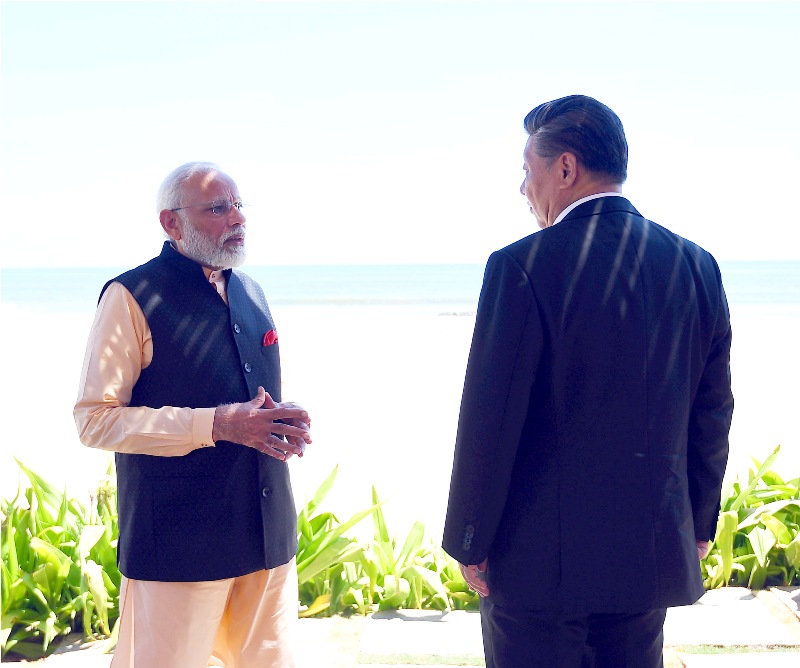
Along with this, we must begin economic and technological engagements with Taiwan, besides supporting it politically.
He also recommended garnering India’s support to the democratic movement in Hong Kong, even if we don’t join western countries’ joint statements.
He also talked about raising the issue of human rights violations in Xinjiang at global platforms.
He stressed the need to build our own capacity on dealing with China and start anticipating steps that China could take in case we start deviating from One China Policy.
“We also need to think whether we should go at once or gradually work towards it?” he said.
The arguments of Nitin Gokhale revolved largely around Taiwan and Tibet.
Exploring India’s policy options on Taiwan, he said, “Taiwan is the low hanging fruit as far as a rethink on One China Policy is concerned. We should think of increasing our economic and technological relations with Taiwan.”
“They are wonderful in electronic chip manufacturing, semiconductors, 5G, etc. Taiwan is a master in these areas.
“India’s trade with Taiwan has moved from 66 Million Dollars to 6 Billion Dollars in the past few years. 90 Taiwanese firms are operating in India.
“There is some direction towards our Taiwan policy, as we have recently set up a separate desk on Taiwan Invest Organisation within the Commerce Ministry.
“Also, in two instances, Indian MPs have attended the PMs inauguration ceremony in Taiwan. India is on the verge of a policy change towards One China Policy towards Taiwan.
“The straits nation can help us train more and more students, government officials, technocrats and teach them Mandarin to help Indian stakeholders study and understand China more,” he said.
Sheshadri Chari enlightened the participants majorly on Xinjian.
He began by explaining the nuances to terminologies.
He said that China doesn’t use the One China Policy, instead, it uses the term - ‘One China Principle’.
“We should never accept the principles propagated by China." Going deep into history, he said that in 1949, China annexed Xinjiang, as a strategic move.
“Uger/Uyghur was its real name and it wasn’t called Xinjiang for a long time. In Chinese terminology, the word Xinjiang literally means borderland or new frontier. Chinese admit themselves that it is not their land.
"In 1955, they converted the new province into the ‘Autonomous Region’. Saifuddin Azizi was the chairman of the autonomous territory and opposed Mao Zedong’s terminology of Xinjiang, which was later named Xinjiang Uyghur Autonomous Region (XUAR),” he said.
Questioning why Xinjiang is important, he explained its strategic importance.
He said, “By occupying Tibet, China occupied an additional landmass and got borders with India, Bhutan, and Nepal, which they didn’t had. Because of occupying Xinjiang, they got direct borders with India (Aksai Chin), Tajikistan, Kyrgyzstan, Mongolia, Russia, Pakistan, Tibet, Afghanistan, and Kazakhstan. It was an important strategic move by China.”
.jpg)
“With the development of Urumqi-Kashgar road, an all-weather road, China will get access to South Asia. Kashgar is a part of the Karakoram range. The road goes through Gilgit Baltistan (GB), connecting it to Islamabad.
“China would further be able to create a road from Galwan valley to GB. It will join the Kashgar-Islamabad road in GB. So that GB becomes the central part of CPEC.
“All these areas are a part of POJK, or Pak occupied India. Thus, China will be making a road in Indian territory to dominate the region.
“India should be more concerned about the scope and range of the One China Policy. It also has significance as far as its relation with Tibet, outer Mongolia, and Xinjiang is concerned.
“What can be done? We should not engage in a barter system with China on One India and One China Policies. Whether or not you accept, One India policy, we will not accept the One China Policy at all,” Sheshadri Chari stressed.
Abhijit Iyer Mitra’s arguments revolved around suggestions for the future course of action.
He began by classifying three major problems of India with China - cutting off the Pakistan-China nexus, the need for a problems free border, and China’s veto power at UNSC.
He also requested the policymakers to think about two major questions.
“First, what can we do to them, that they can not do to us? Second, what can we do to them, that they have done to us in the past? There could be consequences,” he said.
He advocated for a long term policy and said that it can not be bargaining, it needs to be policy.
Exploring policy options, he suggested developing Intelligence cooperation with Taiwanese, who have excellent counterintelligence capabilities and brilliant technological intelligence.
“Similarly, Taiwan has much better access and development in technology with China. Chinese technology is at a much lower level in fundamental terms than Taiwanese,” he said.
“We should ensure that middle-level manufacturing moves away from China to Taiwan,” he said.
He also recommended diverting Chinese attention to the South China Sea and other borders by providing resources and support to countries like Vietnam and Philippines, who are ready to take on China.
He said that Vietnam needs western technologies, but has a trust deficiency towards the West. India should act as a platform for the transfer of Western tech to Vietnam.
He also argued about the need to have clarity on alliances and suggested moving away from non-aligned movement’s different versions.
“What is the problem in building a doctrinal relationship with Japanese and US forces,” he questioned.
Support Our Journalism
We cannot do without you.. your contribution supports unbiased journalism
IBNS is not driven by any ism- not wokeism, not racism, not skewed secularism, not hyper right-wing or left liberal ideals, nor by any hardline religious beliefs or hyper nationalism. We want to serve you good old objective news, as they are. We do not judge or preach. We let people decide for themselves. We only try to present factual and well-sourced news.





